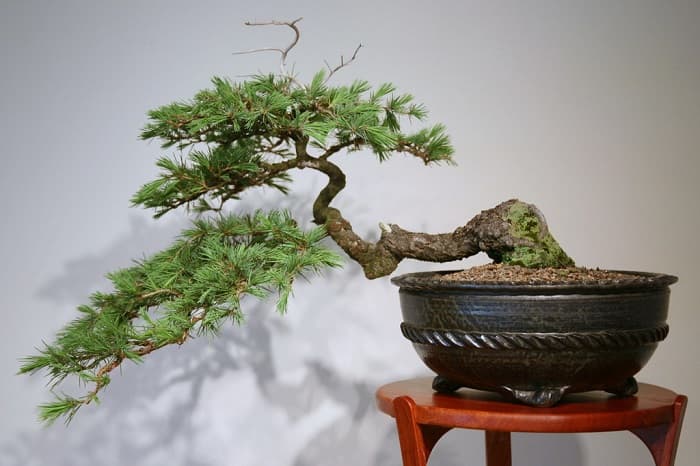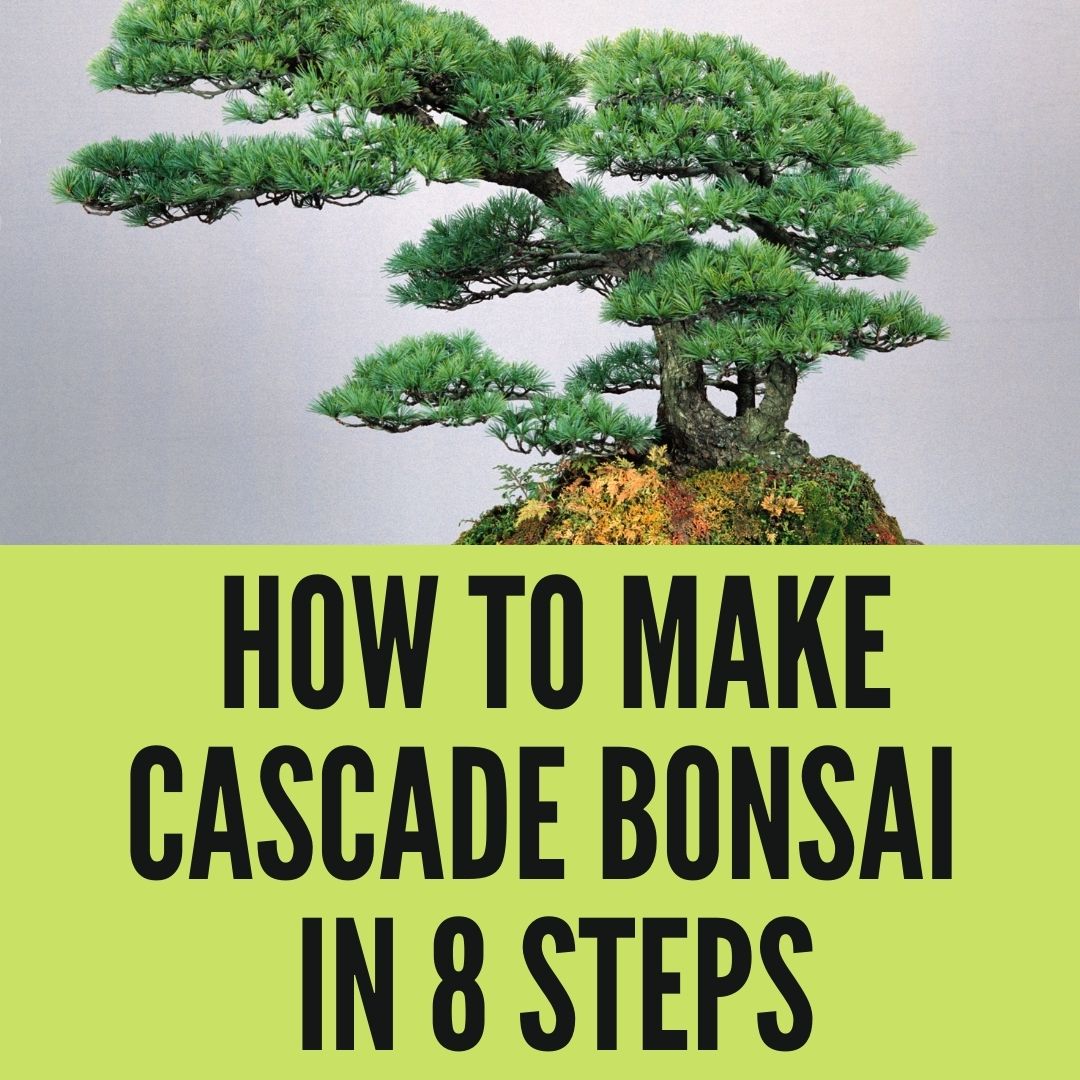Bonsai is a thousand-year-old practice of cultivating trees where a tree is grown in a small pot, and the tree looks like a miniature version of nature. So, bonsai is an art form where you can recreate a scene of nature in a small container. There are many bonsai styles that you can apply to your bonsai plant, such as broom, upright, slanting, windswept, literati, etc.
The Cascade Bonsai (Kengai) style is one of the popular styles. As the name suggests, the cascade style is when the plants grow like a falling waterfall. It represents trees that grow on the edge of a cliff and tend to flow downwards like snowfall or falling rocks.
Cascade Style Bonsai (Kengai)
The main idea behind cascading is that a branch will come down of the pot to create a flowing bonsai style. This technique represents trees that are growing on an edge. A classic cascade style has two parts one growing top and the main branch growing down. This style might be a careful shape to hold, and you have to wire it constantly. But this gives a beautiful addition to your bonsai collection.
Best Species for Cascade
The best species for cascade-style bonsai are ground-hugging species. Some excellent species would be:
- Junipers
- Green Mound Juniper
- Chinese Juniper
- Needle Juniper
- Japanese Garden Juniper
- Juniper Communis
- Cotoneasters
- Scotch Pine
- Japanese Black Pine
- Japanese White Pine
Ingredients for Cascading
Vessel
Cascade bonsai grows in tall pots. A shallow vessel is not the best option for your cascade bonsai. Make sure there is a drainage hole in the bottom. Cover the hole with a plastic net.
Soil
Open granular soil is a good compost for bonsai. A recommended soil recipe would be Levington peat-based compost, Orchid bark, some Japanese pumice, and Japanese black sand.

How to make cascade bonsai?
Take your bonsai out of the container
Find the trunk of the plant
Prune your tree to be in cascade shape
Wire your tree
Bend the trunk to your cascade shape
Cut some roots
Always keep some bonsai soil that came with the bonsai
Now you can wire the branches of the trailing column. Use the smaller gauge wire but don’t wrap them tightly.
Continue to fill and wire
Basic Bonsai Tree Style: It is time we will talk about some other bonsai styles.
- Broom Style Bonsai Tree (Hokidachi): As the name suggests, this tree will look like a broom, a straight upright broom. It grows straight and upright and spreads in all directions. Deciduous trees with fine branching are perfect for this style.
- Formal Upright Bonsai Tree (Chokkan): This is the most common bonsai style. This style represents trees in nature that get a lot of sunlight and grows without any obstacles. The trunks are thicker at the ground.
- Informal Upright Bonsai Tree (Moyogi): This almost the same as Formal Upright Bonsai. The difference is that it grows a bit curve and takes the shape of ‘S’.
- Slanting Bonsai style (Shakan): This is also like the Formal Upright Bonsai. But this time the plant grows 60-80 degrees relative to the ground. This style represents trees that are the result of a one-directional dominant wind blow.
- Windswept Bonsai style (Fukinagashi): These trees, like cascade trees, represents trees that grow in a struggle. The branches, as well as the trunk, is been grown to one side as if the wind has been blowing the tree constantly in one direction.
- Double Trunk Style Bonsai (Sokan): When two trunks come out of the same rootlet that style is double trunk style bonsai. Both columns can come out close to the ground.
- Multi-trunk Bonsai Style (Kabudachi): The concept of multi-trunk bonsai is similar to double trunk style bonsai. Here three or more trunks can come out of a single root.
- Forest Bonsai style (Yose-ue): This style is multiple bonsai planted in one large tray pot. They are not planted in a line but in a scattered way as they represent a forest.
Conclusion
In the end, it can be said that bonsais are a beautiful addition to your house. Acquire the different styles of bonsais. Hope this article has encouraged you to get various type of bonsai and make your garden a more beautiful place. Take care of your bonsai and give them what they need.
